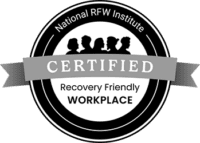The Top Challenges of Oral Oncolytics
Oncolytic treatments for cancer are now being used to infect and kill cancerous tumor cells within the body. They work by alerting the immune system that something’s wrong, triggering an immune response against the tumor cells. To date, only one oncolytic virus has been approved by the Food and Drug Administration (FDA), but several viruses are being used in clinical trials as potential treatments for cancer.
Oral oncolytic treatments are self-administered medications that can be conveniently dispensed at home. These treatments represent a new wave of intervention for cancer patients because patients do not need to be present in a healthcare facility to treat their disease. This reduces the time spent traveling to and from infusion centers and gives oncology nurses the time to focus on other clinical responsibilities.
While oral oncolytic treatments have their clear benefits, adjusting to this relatively new way of cancer treatment includes managing a set of unique challenges. Below are the top issues for treating cancer using oral oncolytics:
Supply Channel Issues
About 50% of oral oncolytic drugs are distributed by specialty pharmacies because they require proof of Risk Evaluation and Mitigation Strategies compliance. Limited distribution networks pose barriers to access, meaning that new drugs may not even be readily available to patients depending on their hospital or clinic. Before shipping medication, specialty pharmacies must verify a number of details related to the patient and the drug, which could create a lag time between the time that the medication is prescribed and its delivery to the patient.
Because of this, supply channel issues related to access easily arise. Coordination between caregivers is paramount to ensure a smooth supply distribution channel from pharmacy through to patient.
Self-management
Like all oral medications, patients must have a reliable and consistent schedule to effectively self-manage their medication. In many cases with oral medication, under- or over-adherence can become a major issue, and oral oncolytics are no different. Patients may skip or decrease doses after experiencing the side effects of these medications, including nausea, forgetfulness, and drowsiness. On the other hand, if a patient believes that the treatment is not working, they may independently increase their doses. Both of these scenarios can be harmful to the success of oral oncolytic treatment plans.
Management of Side Effects
Because the patients using oral oncolytic medications are not visiting their clinic as much as they would otherwise, they must be taught how to identify and manage symptoms and adverse effects at home. Side effects that may be treated at an early stage can progress to dangerous levels if the patient neglects the symptoms.
High Cost
One of the most impactful barriers to oral oncolytic management is cost. A recent Avalere Health study found that nearly 10 percent of patients choose not to fill their initial prescriptions for oral anticancer medications due to the high cost.
Patient Non-adherence
The challenge of patient non-adherence affects much more than the person themselves. Patient non-adherence also impacts the greater healthcare system as a whole and the way that patients use its resources. Mismanagement of a dosage of medication can lead to increased consumption of healthcare resources through more physician visits and hospital stays.
This week, Bob Gold is speaking in Milan, Italy, at the International Oncology Leadership Conference (IOLC) on the topic of oral oncolytics.






Find Us Online